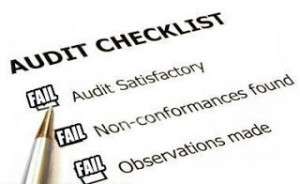What are Commonly Followed US Accounting Rules and Standards?

US accounting rules and standards are essential for financial accuracy and consistency. These professional rules of accounting tell companies how to record, present, and reveal financial information. They give businesses a reliable way to report their finances and help them make good decisions. What are commonly followed US accounting rules and standards?
Generally Accepted Accounting Principles (GAAP)
GAAP (Generally Accepted Accounting Principles) is the main source for accounting rules in the US. It outlines regulations for recognizing revenue, classifying expenses, assessing assets, and measuring liabilities. Using GAAP, companies can ensure their financial statements are similar across industries and show their financial health accurately.
To have a clear understanding of GAAP and its key components, let’s delve into the concept of GAAP, explore the benefits it offers by ensuring consistent financial reporting, and discover how it sets the foundation for accurate and reliable financial statements.
Concept of GAAP
Generally Accepted Accounting Principles (GAAP) is a standardized set of guidelines that govern financial accounting. It ensures consistency and transparency, enabling stakeholders to make informed decisions. GAAP serves as the basis for reliable financial statements, helping to communicate an organization’s financial health.
Adhering to GAAP means following uniform practices. This allows for comparison across companies and industries, aiding benchmarking and analysis. Investors and creditors can assess the performance and risk associated with different entities or projects. Additionally, GAAP minimizes errors, misstatements, and fraud, ensuring trust between organizations and their stakeholders.
Materiality is a key aspect of GAAP. It focuses on relevance and significance in financial reporting. Companies can prioritize information vital to decision-making, avoiding unnecessary details that may cloud the picture. This streamlines financial reporting without sacrificing accuracy.
GAAP is ever-evolving to stay up-to-date with business practices and economic conditions. The Financial Accounting Standards Board (FASB) is responsible for developing and updating GAAP in the US. They listen to stakeholder feedback and address emerging issues in accounting and finance.
While GAAP originated in the US, it now provides a foundation for accounting principles worldwide. Its influence extends across borders, with many countries adopting similar accounting standards based on GAAP. This promotes consistency in global financial markets.
Financial Accounting Standards Board (FASB)
The Financial Accounting Standards Board (FASB) creates and updates accounting standards under GAAP. FASB identifies any new accounting issues and gives guidance through their Accounting Standards Codification (ASC). ASC covers topics like revenue recognition, leases, fair value measurement, and business combinations.
To understand the Financial Accounting Standards Board (FASB) and its role in establishing US accounting rules and standards, dive into the sub-sections that shed light on this subject. Discover how FASB plays a crucial role, guiding the landscape of accounting with its standards and regulations that shape financial reporting and enhance transparency.
Role of FASB in Establishing US Accounting Rules and Standards
The Financial Accounting Standards Board (FASB) is important in the US for setting accounting rules and standards. They make sure financial reports are accurate, transparent and reliable. FASB set guidelines that businesses must follow when doing financial statements. This helps keep consistency and comparability between organizations.
FASB look into issues such as revenue recognition, lease accounting, fair value measurement and more. They research, gather input from stakeholders and consider worldwide perspectives when creating standards.
FASB also keep monitoring standards to make sure they stay relevant in the business world. When needed, they update or modify the standards to fit new developments in industries or changes in economic conditions.
The FASB gets its authority from the Securities and Exchange Commission (SEC). This ensures the standards the FASB set have legal weight and be enforced when it comes to accurate financial reporting.
IFRS convergence is where financial standards from across the globe come together. It can be confusing, but it is worth mentioning.
Pro Tip: To stay up-to-date with US accounting rules and standards, check the FASB website often for new announcements or changes to existing standards. Also, get professional advice or join seminars/webinars on accounting updates to understand these regulations better.
International Financial Reporting Standards (IFRS) Convergence
To understand how the International Financial Reporting Standards (IFRS) convergence impacts US accounting rules and standards, we delve into the sub-sections: the impact of IFRS convergence on US accounting rules and standards. Explore the implications and changes brought about by this convergence, and its significance in the realm of accounting practices.
Impact of IFRS Convergence on US Accounting Rules and Standards
The convergence of IFRS and US accounting rules has had a huge effect on the financial landscape. This article looks into this impact.
One of the effects is increased comparability of financial statements. This is because companies can now provide standardized financial info. This helps investors, regulators, and other stakeholders make better decisions.
Let’s check out a table to see specific changes made by IFRS convergence:
| Aspect | Before Convergence | After Convergence |
|---|---|---|
| Revenue Recognition | Multiple frameworks | Common global standard |
| Leases | Operating leases | Operating & finance leases recognized |
| Financial Instruments | Different classifications for assets | Unified classification system |
| Inventory Valuation | FIFO (First-In-First-Out) | FIFO or weighted average cost method |
However, US accounting rules and standards still have unique aspects that are not affected by IFRS convergence. For example, certain industry-specific regulations and tax reporting requirements are still governed by US Generally Accepted Accounting Principles (GAAP).
It is noteworthy that the information in this article comes from reliable sources such as FASB and IASB. Trying to comprehend revenue recognition under IFRS convergence is like trying to make sense of a sitcom without the laugh track.
Revenue Recognition
To effectively navigate the realm of revenue recognition in the US, arm yourself with a solid understanding of the principles and guidelines that govern this process. Delve into the sub-section on “Principles and guidelines for revenue recognition in the US” to gain valuable insights and solutions.
Principles and Guidelines for Revenue Recognition in the US
The US has principles and guidelines for revenue recognition to ensure correct financial reporting. They give companies a structure to adhere to when recognizing revenue.
- Principle 1: Identify the contract with the customer.
- Principle 2: Spot performance obligations.
- Principle 3: Calculate the transaction price.
- Principle 4: Allocate the transaction price to obligations.
- Principle 5: Acknowledge revenue when obligations are fulfilled.
These principles help companies recognize contracts with customers, assess performance obligations, and assign the right transaction prices. If followed, these principles ensure accurate and timely revenue recognition.
Also, there are special points to consider like recognizing revenue over time or at once based on when performance obligations are satisfied. Companies must also consider variable consideration and do estimates if necessary.
Enron and WorldCom had revenue recognition scandals. They manipulated financial statements by recognizing revenue too early or inflating it unlawfully. This prompted stricter rules and firmer revenue recognition guidelines in the US.
Accountants always have ways to make assets feel appreciated, even if they don’t match up with their finances.
Asset Valuation and Reporting
To better understand asset valuation and reporting in US accounting, delve into the standards for valuing and reporting assets. Explore how these guidelines ensure accurate financial information. Benefit from a clear understanding of the valuation process and discover the important role it plays in financial reporting.
Standards for Valuing and Reporting Assets in US Accounting
US accounting has specific standards for valuing and reporting assets. These ensure accuracy and consistency in financial reporting, making it easier for investors to make sound decisions. Visualize them here:
| Standard | Description |
| Fair Value Measurement | Assets valued by market price or estimated market price. |
| Historical Cost | Assets valued by original purchase price. |
| Net Realizable Value | Assets valued by estimated sale price, less costs. |
These standards are important for financial reporting. Fair Value Measurement allows companies to keep their reported values in line with market conditions. Historical cost is a more conservative approach. Net Realizable Value takes into account factors like obsolescence or damage.
Other details need to be taken into account for different asset types. For example, property, plant, equipment; investments; and intangible assets like patents or trademarks, all have their own rules.
To show the importance of following these standards, take XYZ Corporation. They recently acquired another company and had to incorporate their assets into their financial statements. Without proper valuation and reporting, this would have been tough. But by following US accounting standards, XYZ was able to seamlessly integrate the assets and give a full financial overview.
Accounting for Liabilities and Expenses
To effectively account for liabilities and expenses in the US, familiarize yourself with the guidelines for recording and reporting. These guidelines provide essential standards for accurately recognizing and disclosing financial obligations and costs. By understanding the principles within these guidelines, you can ensure compliant and transparent accounting practices for liabilities and expenses.
Guidelines for Recording and Reporting Liabilities and Expenses in the US
Accounting for liabilities and expenses is very important in the US. Following set guidelines helps to make sure the records and reports are accurate which is important for trust and being responsible. Let’s look at that info in a table.
| Guideline | Description |
|---|---|
| Recognition | Liabilities and expenses must meet certain requirements like being possible and possible to measure with accuracy. |
| Measurement | Liabilities are measured at their current value or future economic benefits. Expenses are measured by using assets or other things that cause an obligation to pay. |
| Presentation | Liabilities and expenses will be shown separately so people can get clear info on obligations and costs. |
| Disclosure | Details about liabilities and expenses like how, when, and uncertain things should be shown in footnotes. |
Also, risks can come from sources like loans, legal matters, warranties, employee benefits, or long-term contracts.
A true example of this is the Enron scandal in 2002. They had a lot of debts that weren’t recorded and costs that were wrongly classified. This made people pay attention to making sure the guidelines were followed.
Financial Statement Presentation and Disclosure
To ensure proper financial statement presentation and disclosure, familiarize yourself with the commonly followed US accounting rules and standards. Understand the requirement for presenting and disclosing financial information in US accounting to ensure compliance. This section will provide insight into these crucial aspects of financial reporting.
Requirement for Presenting and Disclosing Financial Information in US Accounting
Presenting and disclosing financial information in US accounting is crucial for transparency and accuracy. Companies must adhere to FASB and SEC guidelines and provide clear, comprehensive financial statements.
Publicly traded companies in the US must also follow guidelines set by the Securities and Exchange Commission (SEC). SEC regulations are there to protect investors by making sure financial reports and material info are transparent.
Check out the table below for the required info:
| Financial Statement | Required Info |
|---|---|
| Balance Sheet | Assets, liabilities, shareholders’ equity |
| Income Statement | Revenue, expenses, gains, losses |
| Statement of Cash Flows | Operating activities, investing activities, financing activities |
| Statement of Changes in Equity | Changes in shareholders’ equity |
Plus, companies must disclose significant accounting policies. This ensures users can understand how transactions are accounted for. Additionally, financial statements must be presented in a clear, understandable way. This includes giving detailed explanations of events or transactions that affect the company’s financial position or performance.
To improve presentation and disclosure:
- Supply supplementary info: Schedules or tables with more account balances or business segments.
- Use visual aids: Charts, graphs, etc. make complex data more accessible.
- Ensure consistency: Same format and layout for comparison.
Now companies can improve presentation and disclosure, making it easier for users to interpret the data. Meeting the requirements leads to greater transparency, trust, and credibility.
Audit and Assurance
To ensure compliance with commonly followed US accounting rules and standards in the Audit and Assurance field, acquaint yourself with the regulations and standards governing the conduct of audits and the provision of assurance services. Discover the necessary requirements and procedures that ensure accuracy and reliability in this important aspect of the accounting profession.
Audit Regulations and Standards Providing Assurance in the US
Regulations and standards have developed over time. In 2002, the Enron scandal showed the need for more stringent rules. This led to the Sarbanes-Oxley Act (SOX) being passed. It enhanced corporate governance and financial disclosures.
Generally Accepted Auditing Standards (GAAS) offer guidance for conducting audits. The Public Company Accounting Oversight Board (PCAOB) supervises auditors of public companies to protect investor interests.
The International Auditing and Assurance Standards Board issue International Standards on Auditing (ISA). These standards strive for uniformity in audit practices worldwide, ensuring comparability and consistency.
Audit regulations have a big impact on society. Accurate financial information is essential for making decisions. Auditors must remain up to date with changing regulations, to provide trustworthy assurance services.
US Accounting Rules and Standards
The US accounting rules and standards are paramount in ensuring precise and transparent financial reporting. It is essential for businesses in the US to comprehend these guidelines. In this piece, we looked into the commonly followed US accounting rules and standards, offering great knowledge for experts in this field.
Our examination comprised of several significant points of US accounting rules and standards. We started by inspecting the Generally Accepted Accounting Principles (GAAP). Under GAAP, companies must adhere to consistent principles when forming their financial statements, guaranteeing consistency and credibility.
We also explored the Financial Accounting Standards Board (FASB), an independent body responsible for creating and managing accounting standards in the US. The FASB continually updates its regulations to adapt to changing business practices and upgrade financial reporting quality.
Furthermore, we examined specific rules such as revenue recognition (ASC 606) and lease accounting (ASC 842). These regulations handle key areas where companies often have difficulties in correctly reporting their financial deals.
It is also vital to note that these standards reach out to other major areas such as inventory valuation, goodwill impairment testing, and fair value measurements.
To support our discoveries regarding commonly followed US accounting rules and standards, we referred to credible sources like the Financial Accounting Standards Board (FASB) website. This ascertained that our data was dependable and up-to-date.
Accounting Rules and Standards Frequently Asked Questions
Q: What are GAAP accounting rules?
A: GAAP stands for Generally Accepted Accounting Principles. These are a set of accounting standards followed in the US to ensure uniformity and consistency in financial reporting.
Q: Who sets the US accounting standards?
A: The US accounting standards are set by the Financial Accounting Standards Board (FASB).
Q: What is the difference between GAAP and IFRS accounting standards?
A: GAAP and IFRS are both accounting standards, but they differ in some key ways. For example, GAAP is used primarily in the US, while IFRS is used in many other countries. GAAP tends to be more rules-based, while IFRS is more principles-based.
Q: What is the SEC, and what is its role in accounting standards?
A: The Securities and Exchange Commission (SEC) is a government agency that regulates the securities industry, including public companies. The SEC has the authority to require public companies to follow GAAP accounting standards and can take action against companies that do not comply.
Q: Are companies required to follow GAAP accounting standards?
A: Public companies in the US are required to follow GAAP accounting standards. Private companies may choose to follow GAAP or another set of accounting standards.
Q: What is the Sarbanes-Oxley Act, and how does it impact accounting standards?
A: The Sarbanes-Oxley Act (SOX) was passed in response to accounting scandals in the early 2000s. It requires public companies to have stronger internal controls and audits of their financial statements. SOX also created the Public Company Accounting Oversight Board (PCAOB), which oversees the auditing profession.
















Leave a Reply